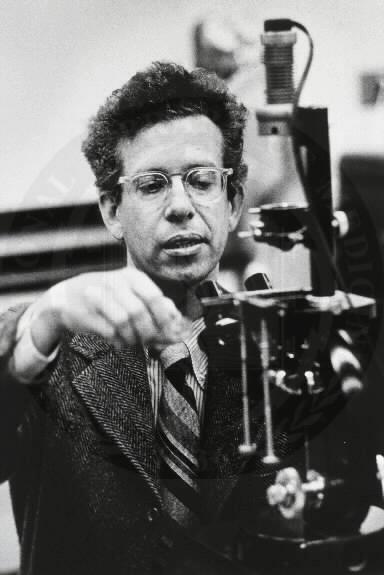Howard Martin Temin (Howard Martin Temin)

Howard Martin Temin’s first exposure to experimental science was during his time at the California Institute of Technology as a graduate student in laboratory of Professor Renato Dulbecco. Temin originally studied embryology at CIT, but after about a year and a half, he switched to animal virology. He became interested Dulbecco’s lab after a chance run-in with Harry Rubin, a postdoctoral fellow in Dulbecco’s lab. In the lab, Temin studied the Rous sarcoma virus, a tumor-causing virus that infects chickens. During his research on the virus, he observed that mutations in the virus yielded alterations in the structural characteristics of the infected cell – thus, integration into the cell’s genome was occurring. As part of his doctoral thesis, Temin stated that the Rous Sarcoma Virus has “some kind of close relationship with the genome of the infected cell.” Following receiving his doctorate, Temin continued to work in Dulbecco’s lab as a postdoctoral fellow. In 1960, the McArdle Laboratory for Cancer Research at the University of Wisconsin – Madison recruited him as a virologist; a position that had been hard to fill because, at the time, virology was not considered pertinent to cancer research. Even though Temin know he would be completely independent in Madison, because of the lack of research involving virology and oncology together, Howard Martin Temin stated that he was “supremely self-confident.” When he first arrived in Madison in 1960, he found an unprepared laboratory in the basement of a rundown building with an office that could be considered a closet. Until a more suitable laboratory could be prepared, he continued his research with RSV at a friend’s laboratory at the University of Illinois. Later that year, he returned to Madison, continued his RSV research in his own lab, and began his position as an assistant professor.
While studying the Rous sarcoma virus at UW-Madison, Howard Martin Temin began to refer to the genetic material that the virus introduced to the cells, the “provirus.” Using the antibiotic, actinomycin D, which inhibits the expression of DNA, he determined that the provirus was DNA or was located on the cell’s DNA., These results implied that the infecting Rous sarcoma virus was somehow generating complementary double-stranded DNA. Temin’s description of how tumor viruses act on the genetic material of the cell through reverse transcription was revolutionary. This upset the widely held belief at the time of a popularized version of the “Central Dogma” of molecular biology posited by Nobel laureate Francis Crick, one of the co-discoverers of the structure of DNA (along with James Watson and Rosalind Franklin). Crick had claimed only that sequence information cannot flow out of protein into DNA or RNA, but he was commonly interpreted as saying that information flows exclusively from DNA to RNA to protein. Many highly respected scientists disregarded his work and declared it impossible. Despite the lack of support from the scientific community, Temin continued to search for evidence to support his idea. In 1969, Temin and a postdoctoral fellow, Satoshi Mazutani, began searching for the enzyme that was responsible for the phenomenon of viral RNA being transferred into proviral DNA. Later that year, Howard Martin Temin showed that certain tumor viruses carried the enzymatic ability to reverse the flow of information from RNA back to DNA using reverse transcriptase. Reverse transcriptase was also independently and simultaneously discovered in association with the murine leukemia virus by David Baltimore at the Massachusetts Institute of Technology. In 1975, Baltimore and Temin shared the Nobel Prize of Physiology or Medicine. Both scientists completed their initial work with RNA-dependent DNA polymerase with the Rous sarcoma virus.
The discovery of reverse transcriptase is one of the most important of the modern era of medicine, as reverse transcriptase is the central enzyme in several widespread viral diseases such as AIDS and Hepatitis B. Reverse transcriptase is also an important component of several important techniques in molecular biology, such as the reverse transcription polymerase chain reaction, and diagnostic medicine.
Born
- December, 10, 1934
- USA
- Philadelphia, Pennsylvania
Died
- February, 09, 1994
- USA
- Madison, Wisconsin
Cause of Death
- lung cancer
Cemetery
- Forest Hill Cemetery
- Madison, Wisconsin
- USA


